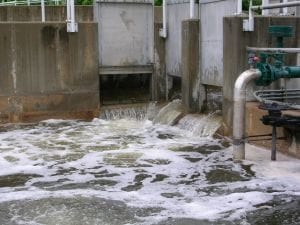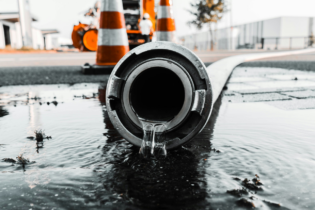The current debate with regards to wastewater reuse is about whether ‘The polluter pays’ principle should apply or companies be proactive about their water issues, Dow regional commercial manager: sub-Saharan Africa, Susan Cole, tells Chantelle Mattheus.
“We believe in the reuse of wastewater as a way to reach sustainability. Water is an important element of life and the most scarce of commodities in the world and in our country. There are seven billion people and another two billion are expected to join by 2050. Each of us will aim to consume around 100 to 200 ℓ of water every day. Therefore, we have to stress that every drop matters and is HIGHLY precious,” says Cole. She adds that industry, and ultimately South Africa’s economy, is driven by water usage either directly or indirectly. Power generation is a water intensive industry; yet without power other industries cannot grow. “The more we industrialise the more we need water and, as we do so, the more we contaminate our limited water sources. This leads to the need for more advanced methods of purification to return the water to a state fit for drinking or for reuse in an industrial application. However, as Cole notes, wastewater reuse is relatively new to this part of the world. It is only just being considered in the local landscape by companies looking to make the most out of their water usage. “The cost of potable water is a driver and by reusing wastewater a company can realise savings and still operate optimally and efficiently,” states Cole. With increasing demands on water to support population growth and industrialisation, we need to change our mindsets about water, believes Cole. “In areas where clean, potable water is available, it is often undervalued and in essence considered “free”. The cost of water is often not linked to the value of water making conservation and water management a lower priority than it should be.” According to Cole, there are good wastewater discharge standards in this region but currently under discussion is whether ‘The polluter pays’ principle should apply or whether companies need to be proactive about their water issues? “This is where Dow can play a role in facilitating solution creation and in the same space save companies money. A win-win for all involved, including the environment,” says Cole. She adds that Dow’s mission is to passionately innovate what is essential to human progress by providing sustainable solutions to its customers. “We are constantly working in our research and development laboratories, on solutions that treat wastewater effectively and efficiently. We focus on making water usage more efficient. Dow has a number of technologies that can do just that cost-effectively.” Dow Water & Process Solutions’ UF & RO technologies have recently been used in plants built to treat coal mine drainage wastewater, processing the water to a standard used as feed water for a nearby power station demineralisation plant. “This a good example of wastewater reuse playing a very efficient role in conserving our scarce water resources,” says Cole. According to Cole, there are many different options available to treat wastewater, ranging from conventional treatment to alternative technologies such as reverse osmosis (RO), ultrafiltration (UF), ion exchange (IE), electrodeionisation (EDI) and zero liquid discharge (ZLD), to name a few.“What type of option you choose is very much dependant on the water problem itself.
“At any rate, Dow is the only manufacturer to offer a full portfolio of water treatment technologies, from ion exchange resins, reverse osmosis membranes, ultrafiltration modules to electrodeionisation products that continue to set an industry standard for quality and reliability,” concludes Cole. Under consideration When considering wastewater reuse technologies, there are certain aspects to keep in mind, according to Cole. They are:- Effective “whole-life” water management is key for industrial operations








